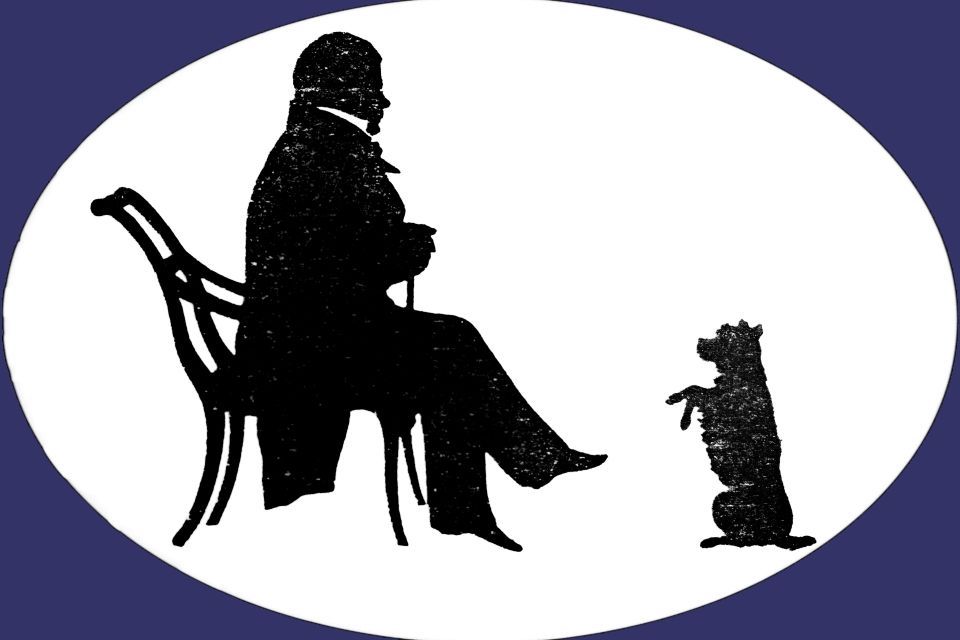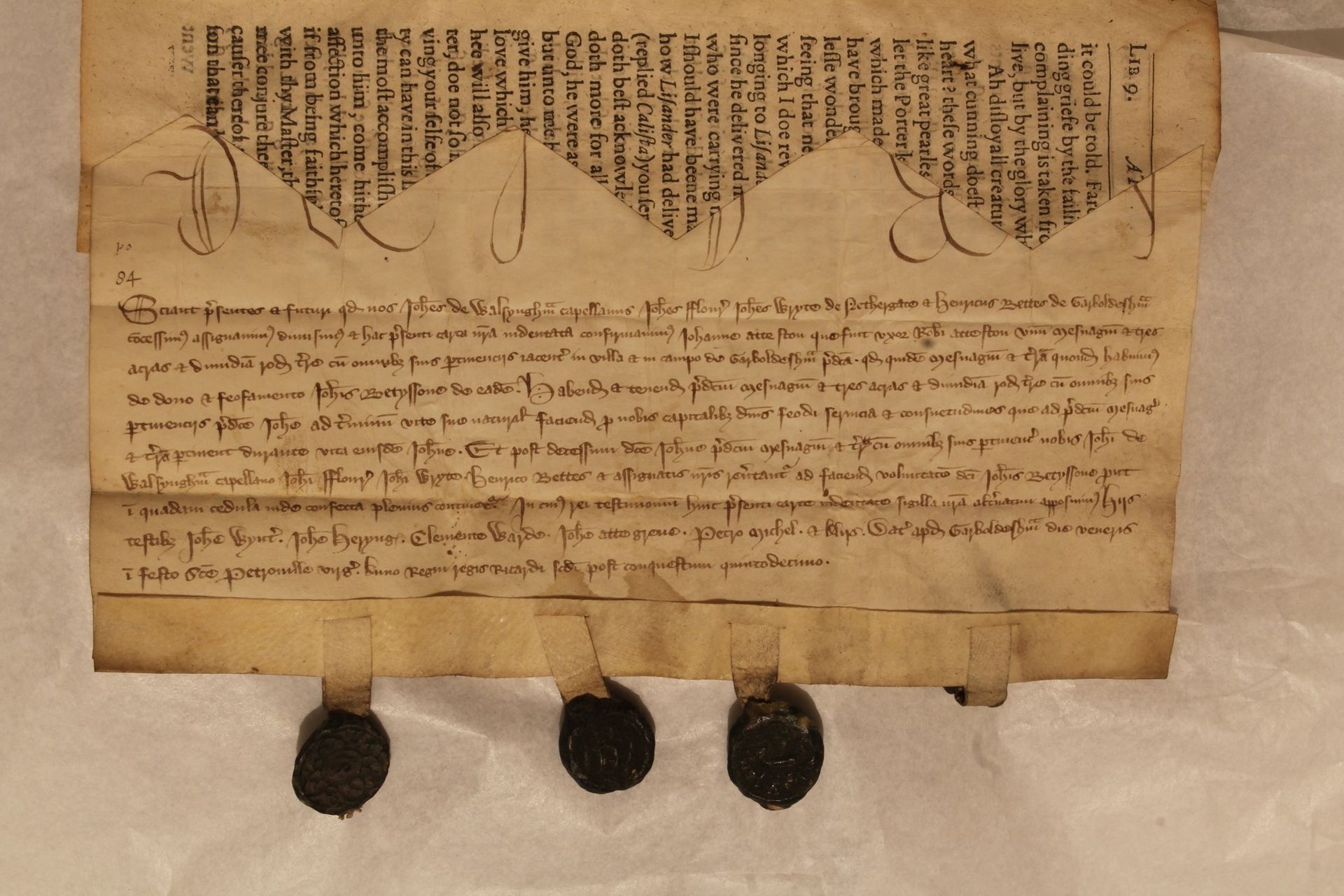A Very Curious Collection: The Abbotsford Book of Deeds
Thursday 5th March 2020
Summary of the Talk:
Dr Margaret Connolly, a senior lecturer in medieval studies, delivered a detailed and engaging talk about a remarkable and unusual object held at Abbotsford: a "book" that is not quite a book. Known as The Abbotsford Book of Deeds, this object is a hybrid collection that merges a 17th-century printed prose romance (now largely gutted) with over a hundred medieval parchment charters from East Anglia, dating from 1291 to the early 15th century.
The original printed text, A Tragic-Comical History of Our Times, was a French romance translated into English and printed in 1635. Only the first and last printed pages remain; the book's shell was reused to bind the collection of charters—each written in Latin, pasted in place, and some still bearing their original seals.
Walter Scott acquired the book in 1824 from William Riddell, a neighbour and legal associate, who presented it as a gift. Though Scott expressed formal gratitude, letters reveal he strongly disliked Riddell, referring to him as “old Cami” and stating, “I cannot tolerate that man.”
Tracing the book's earlier provenance, Dr Connolly uncovered connections to the antiquaries Peter Le Neve and Thomas Martin of Palgrave. Le Neve borrowed the collection from Martin, who likely assembled it by inserting medieval charters into the old book binding. A woman named Bridget Russell, whose name is inscribed on the back cover, appears to have owned the original romance book before its transformation.
Martin, a noted collector with somewhat dubious ethics (he married Le Neve’s widow and gained his collections), probably constructed the hybrid object in the early 18th century, perhaps for easier access or reference. The resulting artefact defied categorisation—neither wholly book nor archive—and proved difficult to store, preserve, or describe.
Today, the collection is housed at Abbotsford. The book contains 106 documents, arranged in chronological order, some with multiple or detached seals. The method of binding charters into an old book may have been Martin’s invention or part of a broader practice among 18th-century antiquaries. Dr Connolly suggested the object could support a dedicated PhD project due to its unique structure and historical insights.
Notable Points & Insights
- The “Book” Is Not a Book: It's a 17th-century printed volume turned into a binding for medieval charters—an early form of upcycling with academic purpose.
- Surprising Dislike: Despite the gift, Scott held a deep grudge against Riddell, referring to him with disdain in private letters.
- Rare Survival of Matched Indentures: Two halves of a legal indenture survive in the collection and match perfectly—an extremely rare occurrence.
- Importance of Seals: In the 19th century, collectors were more interested in the seals than the texts, akin to stamp collecting.
- Early Female Ownership: Bridget Russell’s ownership provides a rare glimpse into the reading habits and book ownership of educated 17th-century women.
- Potential Research Treasure: The collection has never been fully transcribed or studied in detail—ideal for a future PhD or scholarly project.
- A Real “Curious Collection”: Scott’s description is apt. The object blurs lines between genres, media, and centuries, and offers insights into collecting, preservation, and personal relationships.
Margaret Connolly is Professor of Palaeography and Codicology at the University of St Andrews. She specialises in the study of later medieval English literature and its manuscript contexts, and is interested in both the scribes who produced medieval books and the readers who read them, as well as those who owned and preserved medieval manuscripts after the Middle Ages. These are aspects of book history that are explored in her publications: John Shirley: Book Production and the Noble Household In Fifteenth-Century England (1998) and Sixteenth-Century Readers, Fifteenth-Century Books: Continuities in Reading in the English Reformation (2019).
Selected images from her presentation shown below.
Synopsis: On display in a cabinet at Abbotsford is a curious book-object. It consists of a substantial collection of medieval charters, many with dependant wax seals attached, which have been been grafted onto the stump of a seventeenth-century printed book. The Latin parchment documents, which were given to Walter Scott by a neighbour, relate to lands in Suffolk and once belonged to the antiquary Thomas Martin of Palgrave. The printed paper book is a copy of a popular English prose romance,
A Tragi-comicall History of our Times, itself now a rarity. This talk explores the history of the hybrid book-object, starting with Scott's acquisition of it. It considers who made it and when, and how its different elements were brought together, tracing a detective trail of provenance back over 500 years.






